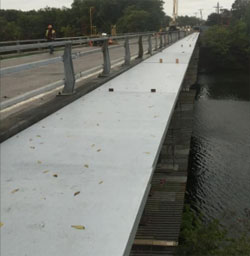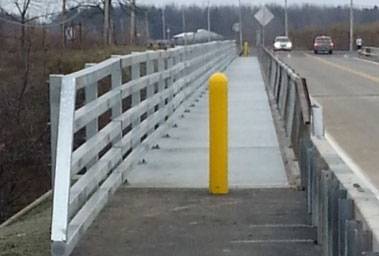Where The Sidewalk Ends—Cantilever Begins
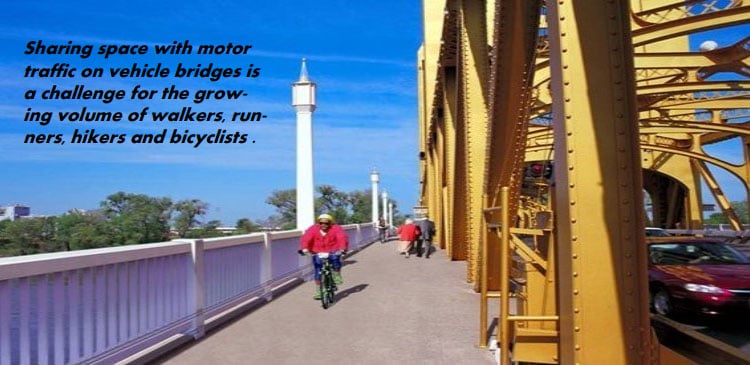
Counting. It’s something agencies can’t do when it comes to determining pedestrian and bicycle volume. The National Cooperative Highway Research Program is investigating new technologies and methods for compiling the data, the lack of which experts say is a roadblock for DOTs attempting to plan more effective facilities and improve safety for foot and bicycle traffic.
Lack of data isn’t the only issue. For vehicle bridges that have existing sidewalks, most are too narrow to support the increase in travelers. Taking more space from vehicle
lanes is prohibitive and dead load weight limitations often rule out concrete for the 10 ft to 15 ft wide sidewalks desired by designers and owners. Installing a separate bridge involves more cost and space constraints.
One solution is the FiberSPAN™ FRP cantilever sidewalk. Lightweight and easy-to install, the cantilever sidewalk system has minimal maintenance for a longer life cycle.
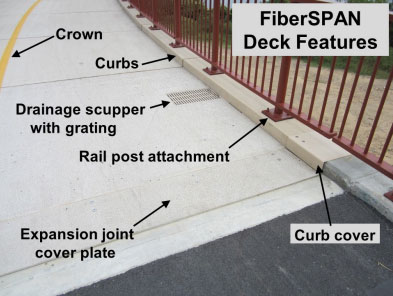
FiberSPAN panels weigh between 4 and 9 psf for a 80 percent weight savings when compared to concrete decking. Sidewalk components are prefabricated to reduce installation costs and speed construction. Features like those illustrated above can also be added during prefabrication. A sidewalk system featuring stringers, deck and railing can weigh as little as 16 psf.
Wilson-Burt Bridge Gets New FiberSPAN Cantilever Sidewalk
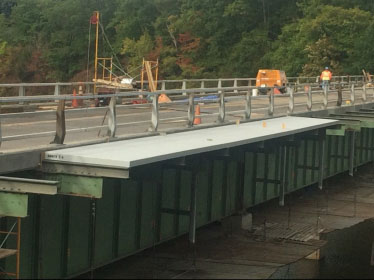
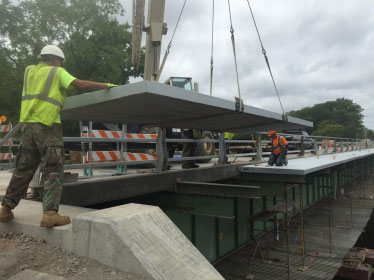
In Niagara, New York, Wilson-Burt Bridge’s crumbling sidewalk was replaced with a 5.5 ft. wide FiberSPAN FRP cantilever sidewalk engineered to support a live load of 85 psf while minimizing deflections to less than 1/4 in. (L/500). The deck panels were prefabricated with a 1.76 percent cross-slope top surface for water drainage. The panels sloped from 6.375 in. down to 5 in. A cross-slope is easier and more cost effective than sloping support beams or installing shims. The railing attaches to internal steel connection points embedded in the deck panels. The deck has a shop-applied non-slip surface. Twenty panels at approximately 22 ft. long each comprise the 442 ft. long sidewalk.
